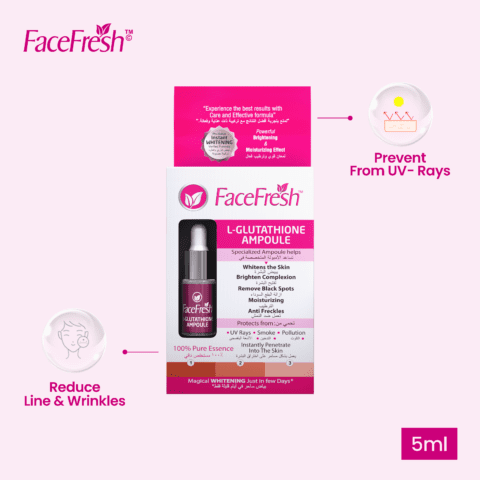Redness is a common skin concern that affects many individuals. It can be caused by various factors, including skin conditions, environmental triggers, and lifestyle choices. Dealing with redness can be frustrating and impact one’s self-confidence. Fortunately, there are effective strategies and treatments available to calm redness and restore a more even complexion.
1. Introduction
Redness is a prevalent issue that can affect people of all ages and skin types. It manifests as a visible flush or discoloration on the skin’s surface, often accompanied by irritation or sensitivity. Understanding the underlying causes of redness is crucial in finding the right solutions to address this concern effectively.
2. Understanding Redness
What causes redness?
Redness can stem from various factors, including:
- Inflammation: Inflammatory skin conditions like rosacea, eczema, or dermatitis can result in persistent redness.
- Sensitivity: Individuals with sensitive skin may experience redness due to reactions to certain products, environmental triggers, or temperature changes.
- Allergies: Allergic reactions can cause redness and inflammation as the immune system responds to perceived threats.
- Sun Exposure: Overexposure to the sun’s harmful UV rays can lead to temporary redness known as sunburn.
Types of skin conditions causing redness
- Rosacea: A chronic skin condition characterized by facial redness, visible blood vessels, and often accompanied by acne-like breakouts.
- Eczema: A condition that causes red, itchy, and inflamed patches on the skin.
- Dermatitis: Inflammation of the skin resulting from contact with irritants or allergens.
- Acne: Inflammatory acne lesions can cause localized redness in affected areas.
3. The Importance of Calming Irritated Complexions
Reducing redness is not just about improving the appearance of the skin; it also plays a significant role in overall well-being. Here are some reasons why calming irritated complexions is essential:
Benefits of reducing redness
- Improved skin texture: Minimizing redness can result in a smoother and more even skin tone.
- Enhanced self-confidence: Reducing redness can boost self-esteem, allowing individuals to feel more comfortable and confident in their own skin.
- Alleviated discomfort: Redness is often accompanied by itching, burning, or stinging sensations. By calming the skin, these discomforts can be alleviated.
The impact of redness on self-confidence
Redness can have a profound impact on one’s self-confidence. It may lead to feelings of self-consciousness, social anxiety, and a reluctance to engage in social activities. By addressing redness and achieving a calmer complexion, individuals can regain their confidence and enjoy improved quality of life.
4. Effective Strategies to Calm Redness
Skincare routine for redness
Establishing a gentle and consistent skincare routine can help calm redness. Here are some essential steps to consider:
- Cleansing: Use a mild, non-irritating cleanser that won’t strip the skin of its natural moisture.
- Moisturizing: Opt for moisturizers formulated with soothing ingredients like aloe vera, chamomile, or green tea extract.
- Sun Protection: Apply a broad-spectrum sunscreen with an SPF of 30 or higher to protect the skin from UV damage.
- Avoid Harsh Ingredients: Steer clear of products containing alcohol, fragrance, or harsh exfoliants, as they can exacerbate redness.
Ingredients to look for in redness-reducing products
When selecting skincare products specifically targeted at reducing redness, look for the following ingredients:
- Calendula: Known for its anti-inflammatory properties, calendula can help soothe redness and promote skin healing.
- Niacinamide: This ingredient helps strengthen the skin barrier and reduce inflammation, effectively minimizing redness.
- Green Tea Extract: Rich in antioxidants, green tea extract has calming effects and helps alleviate redness.
Lifestyle factors that contribute to redness
Certain lifestyle choices can exacerbate redness. Consider the following factors and make necessary adjustments:
- Stress Management: Stress can trigger redness, so incorporating stress-reducing activities such as meditation or exercise is beneficial.
- Temperature Control: Extreme temperatures, hot showers, or exposure to cold winds can worsen redness. Protect your skin accordingly.
- Avoid Over-Exfoliation: While exfoliation is essential, overdoing it can irritate the skin and worsen redness. Opt for gentle exfoliants.
5. Professional Treatments for Redness
In some cases, professional treatments may be necessary to effectively manage redness. Dermatologists can offer various procedures and therapies tailored to individual needs. Here are a few examples:
Dermatological procedures for redness
- Laser Therapy: Laser treatments target blood vessels and reduce redness associated with conditions like rosacea.
- Chemical Peels: These exfoliating treatments can help improve the appearance of redness and promote skin renewal.
- Intense Pulsed Light (IPL): IPL treatments use light energy to address redness, pigmentation, and other skin concerns.
Laser treatments for redness
- Pulsed Dye Laser: This laser specifically targets blood vessels, reducing redness associated with conditions like rosacea.
- Fractional Laser: Fractional laser treatments can help improve skin texture and tone, reducing redness caused by scarring or pigmentation issues.
6. Tips for Preventing Redness
Preventing redness is just as important as treating it. Consider the following tips to minimize the occurrence of redness:
Avoiding triggers
- Identify Triggers: Pay attention to factors that worsen redness, such as certain skincare products, spicy foods, or temperature changes.
- Patch Testing: Before introducing new products, perform a patch test to check for any adverse reactions or irritation.
Protective measures against environmental factors
- Sun Protection: Shield your skin from UV rays by wearing broad-spectrum sunscreen, protective clothing, and seeking shade.
- Temperature Control: When temperatures are extreme, use fans, humidifiers, or air purifiers to maintain a comfortable environment.
7. The Role of Diet and Nutrition
Diet and nutrition play a vital role in skin health. Consuming a balanced diet can help minimize redness. Consider the following:
Anti-inflammatory foods
Incorporate the following anti-inflammatory foods into your diet:
- Fatty Fish: Rich in omega-3 fatty acids, fish like salmon or sardines can help reduce inflammation and redness.
- Leafy Greens: Vegetables like spinach, kale, and broccoli are packed with antioxidants and anti-inflammatory properties.
- Berries: Blueberries, strawberries, and raspberries are high in antioxidants that combat inflammation.
Supplements for reducing redness
Certain supplements may support skin health and reduce redness. Consult a healthcare professional before starting any new supplements. Some options include:
- Omega-3 Fatty Acids: Fish oil or flaxseed oil supplements can provide anti-inflammatory benefits.
- Probiotics: Probiotic supplements can help promote a healthy gut microbiome, which may positively impact skin health.
8. Embracing a Calming Skincare Routine
Developing a skincare routine specifically tailored to calm redness is crucial. Here are some tips to create a soothing skincare regimen:
- Be Gentle: Use gentle, fragrance-free products to avoid further irritation.
- Test Patch: Before using new products, perform a patch test to ensure compatibility and minimize the risk of adverse reactions.
- Soothing Ingredients: Incorporate products with soothing ingredients like chamomile, oat extract, or aloe vera.
9. Redness Management: Dos and Don’ts
To effectively manage redness, consider the following dos and don’ts:
Dos:
- Do Protect Your Skin: Shield your skin from UV rays, harsh weather conditions, and potential irritants.
- Do Seek Professional Advice: Consult a dermatologist for personalized guidance and treatment options.
- Do Practice Patience: Consistency is key when managing redness. Results may take time, so be patient and stick to your routine.
Don’ts:
- Don’t Overdo It: Avoid excessive exfoliation, harsh products, or aggressive skincare techniques that may worsen redness.
- Don’t Pick or Pop: Refrain from picking at or popping any redness or acne, as it can lead to further inflammation and potential scarring.
- Don’t Skip Sunscreen: Protecting your skin from UV rays is crucial, even on cloudy days. Always wear sunscreen.
10. Conclusion
Redness can be a bothersome skin concern, but with the right strategies, treatments, and skincare routine, it can be effectively managed. By understanding the underlying causes of redness and adopting a holistic approach, individuals can calm irritated complexions and regain their confidence. Remember to consult with professionals for personalized advice and embrace a consistent routine to achieve the best results.




Leave a comment
Your email address will not be published. Required fields are marked *